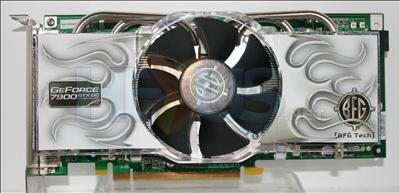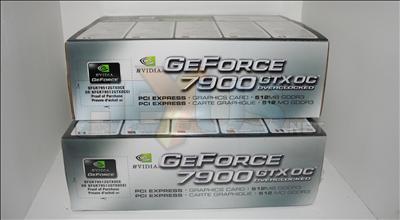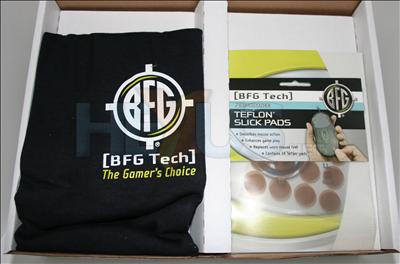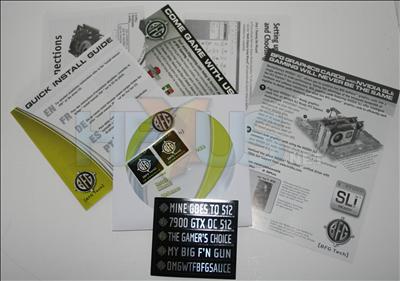BFG Tech GeForce 7900 GTX OC™

We forgive the use of the reference cooler when it comes to retail 7900 GTX boards, simply because it's so effective without making a racket. It's not perfect, but it's closer than most, and makes nary a whisper even when asked to work hard by the G71 GPU and Samsung BJ11 DRAMs underneath.
Like the GT, it needs external power help and both DVI ports are the dual-link variety, powered by the pair of internal transmitters hosted by the GPU package. It's a big board and the cooler is dual-slot, meaning it won't fit in every chassis on the planet, but then you already knew that.

Clocked at 670/820, versus 650/800, the GeForce 7900 GTX OC™ doesn't increase clocks by more than 3% compared to reference, so the real-world difference stands to be pretty negligable.
Presentation and Bundle
The flagship of BFG Tech's single GPU desktop range, the GTX OC™ gets a bit better bundle the the 7900 GT or 7600 GT, and the packaging is much nicer.
A much bigger box contains interior compartments, rather than the single plastic clamshell of the others. The board inside is kept snug via anti-static bag and an outer bubble wrap bag, inside its own compartment in the box. Nicely done, no cause for concern there.


Along with the cable and connector bundle outlined for the 7900 GT OC™, the 7900 GTX also comes with T-shirt (big enough even for a fat man like me), some Teflon mouse skates for slipping your mouse more easily over a compatible surface (I use 'em, nice inclusion), and a manual and CD holder.
Inside that holder wallet is the best thing ever bundled with a consumer graphics board. Seriously. SRLSY!!1
"OMGWTFBFGSAUCE"? ZOMG TEH LOOOOL!!!111??!111eighteen










